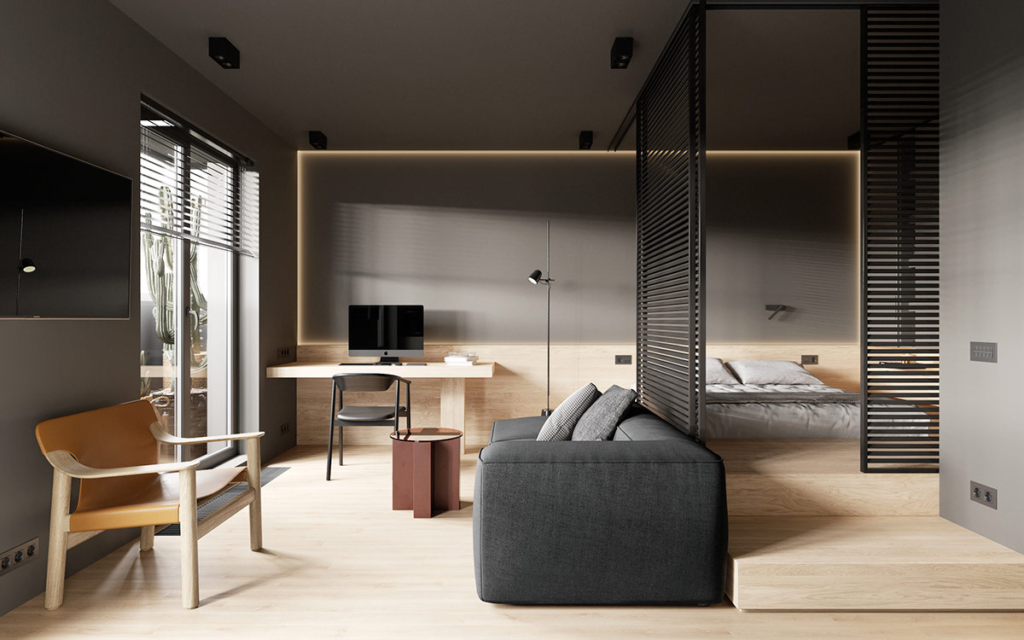Millennials are reshaping the market, demanding homes that not only meet their aesthetic values but also align with their lifestyles.
Approximately 72% of millennials prioritize spaces that foster social interaction and personal growth, reflecting a shift towards more functional, sustainable, and minimalist designs.
This guide explores the top seven building designs that resonate with millennials, showcasing modern and minimalist spaces that are both innovative and inviting.
1. Eco-Friendly Urban Lofts
Urban lofts are a staple for the millennial who craves a blend of contemporary design and sustainability. These spaces often feature recycled materials, large windows for natural lighting, and open floor plans that reflect a commitment to eco-conscious living.
Urban lofts are typically situated in revitalized neighborhoods, close to public transport and local amenities, which is a huge plus for environmentally aware millennials.
The integration of green technologies like solar panels and smart thermostats also helps millennials minimize their carbon footprint while enjoying a chic, urban lifestyle.
2. Minimalist Studios
“Minimalism is more than just an aesthetic; it’s a lifestyle choice that many millennials are eagerly embracing. Minimalist studios with clean lines, functional furnishings, and uncluttered spaces appeal to those seeking a simple, stress-free living environment,” emphasizes building designers from Gungahlin.

These units maximize limited space through built-in storage and multipurpose furniture, embodying the principle that less is more. For millennials looking to declutter their lives and minds, minimalist studios offer a sanctuary from the bustling world outside, enabling a focus on personal productivity and well-being.
3. Co-Living Spaces
The concept of co-living has taken off among millennials who value community and shared experiences over square footage. Co-living spaces provide private bedrooms with shared common areas like kitchens and lounges, facilitating a social environment where ideas and costs are shared.

Such designs not only reduce living expenses but also foster a sense of community, making them ideal for millennials looking to network and socialize. Co-living spaces often come with all-inclusive services, which simplify budgeting—a perfect match for the millennial lifestyle.
4. High-Tech Hubs
For the tech-savvy millennial, a home equipped with the latest technological advancements is a must. High-tech hubs feature smart home systems that control lighting, heating, security, and more, all optimized for energy efficiency and personal convenience.
These homes are designed to keep up with the fast-paced millennial lifestyle, offering seamless integration with their digital lives. From remote-controlled window shades to voice-activated appliances, high-tech hubs are all about making daily life more connected and less cumbersome.
5. Convertible Apartments
Convertible apartments offer flexible living spaces that can easily be adapted to suit different needs, from turning a living area into a home office to creating temporary guest rooms. This adaptability is especially appealing to millennials, who appreciate versatility in their living arrangements.
These apartments use movable walls, foldable furniture, and modular units to transform the space based on the user’s immediate needs. For millennials, the ability to customize their living space on the fly is not just a luxury—it’s essential for maximizing their dynamic lifestyles.
6. Industrial-Chic Spaces
Industrial-chic designs combine rustic elements with modern aesthetics, featuring exposed brick walls, metal fixtures, and wood accents. This style appeals to millennials for its raw, authentic look and its nod to the urban-industrial history.
These spaces often encourage creativity and personal expression, making them ideal for millennials who are artists or entrepreneurs. The robust, yet refined, look of industrial-chic not only stands out visually but also inspires the inhabitants, blending form with function.
7. Wellness-Centric Designs
Wellness-centric designs prioritize aspects like natural light, indoor air quality, and nature integration, which are crucial for mental and physical health. Millennials, who are increasingly health-conscious, are drawn to these spaces that promote a healthy lifestyle.
Features like floor-to-ceiling windows, air purification systems, and indoor plants are common in these designs, creating a living space that enhances well-being. For millennials, a home that supports their health is just as important as one that meets their aesthetic preferences.
The Millennial Blueprint
Millennials are not just looking for a place to live; they are seeking a space that aligns with their values, enhances their lifestyle, and provides a canvas for personal expression. The building designs we’ve explored cater directly to these needs, offering modern and minimalist aesthetics that do not compromise on functionality or flair.
As millennials continue to dominate the housing market, these designs are not just fashionable choices—they are smart investments in a future where home is not just where the heart is, but where the community, technology, and wellness intersect.
Recommended Reading: 10 Simple 1 BHK House Plan Ideas For Indian Homes
Did you like this article?
Share it on any of the following social media channels below to give us your vote. Your feedback helps us improve.



















